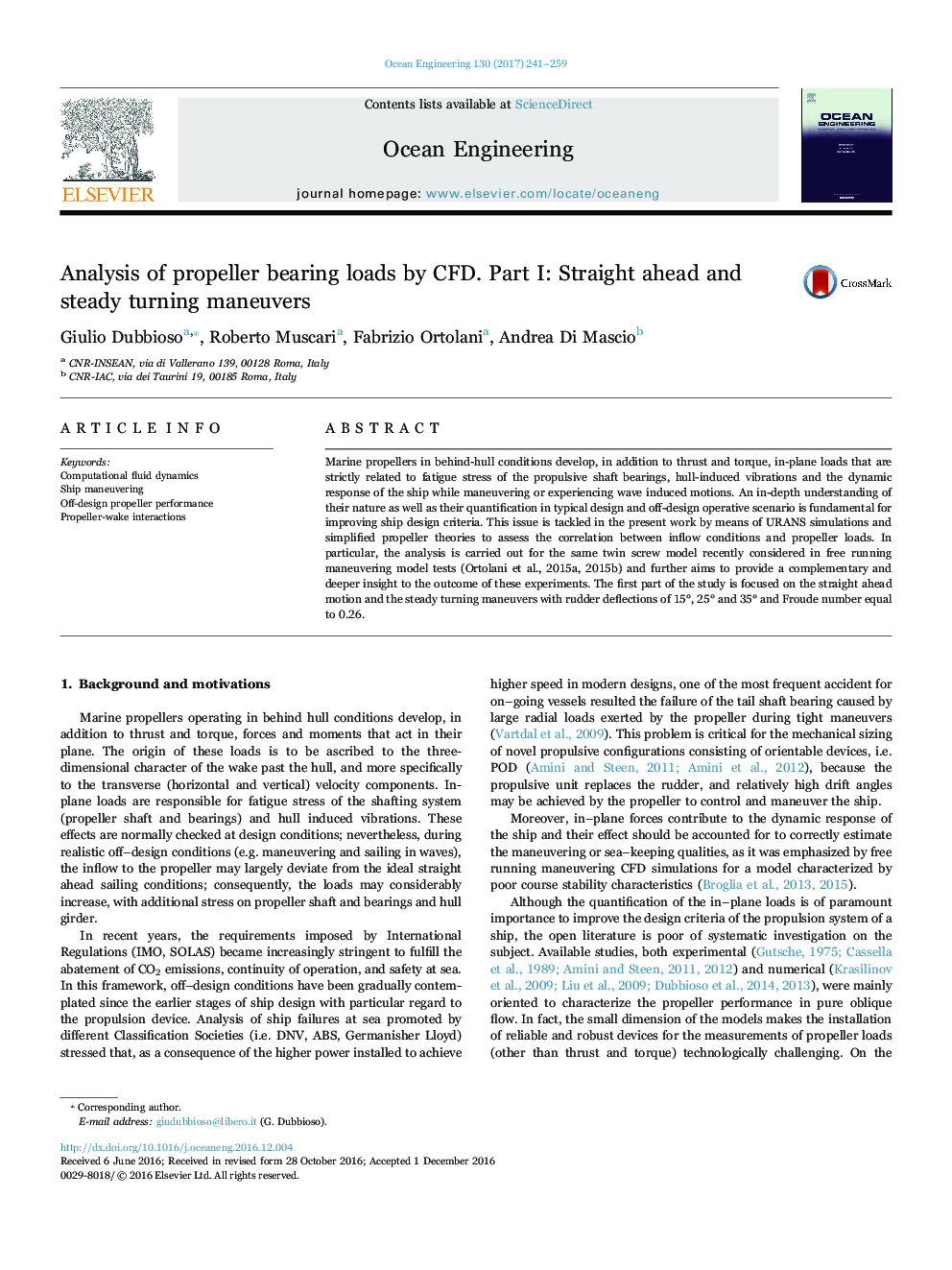| Article ID | Journal | Published Year | Pages | File Type |
|---|---|---|---|---|
| 5474629 | Ocean Engineering | 2017 | 19 Pages |
Abstract
Marine propellers in behind-hull conditions develop, in addition to thrust and torque, in-plane loads that are strictly related to fatigue stress of the propulsive shaft bearings, hull-induced vibrations and the dynamic response of the ship while maneuvering or experiencing wave induced motions. An in-depth understanding of their nature as well as their quantification in typical design and off-design operative scenario is fundamental for improving ship design criteria. This issue is tackled in the present work by means of URANS simulations and simplified propeller theories to assess the correlation between inflow conditions and propeller loads. In particular, the analysis is carried out for the same twin screw model recently considered in free running maneuvering model tests (Ortolani et al., 2015a, 2015b) and further aims to provide a complementary and deeper insight to the outcome of these experiments. The first part of the study is focused on the straight ahead motion and the steady turning maneuvers with rudder deflections of 15°, 25° and 35° and Froude number equal to 0.26.
Related Topics
Physical Sciences and Engineering
Engineering
Ocean Engineering
Authors
Giulio Dubbioso, Roberto Muscari, Fabrizio Ortolani, Andrea Di Mascio,
